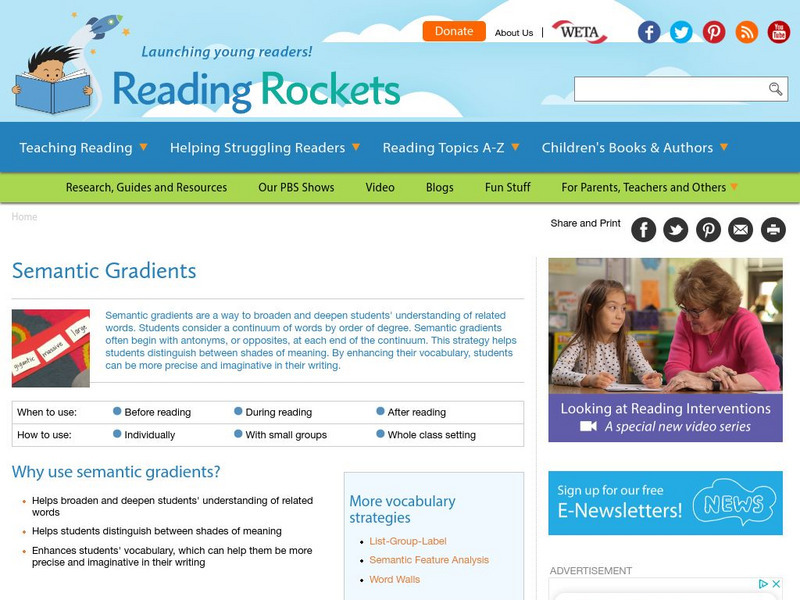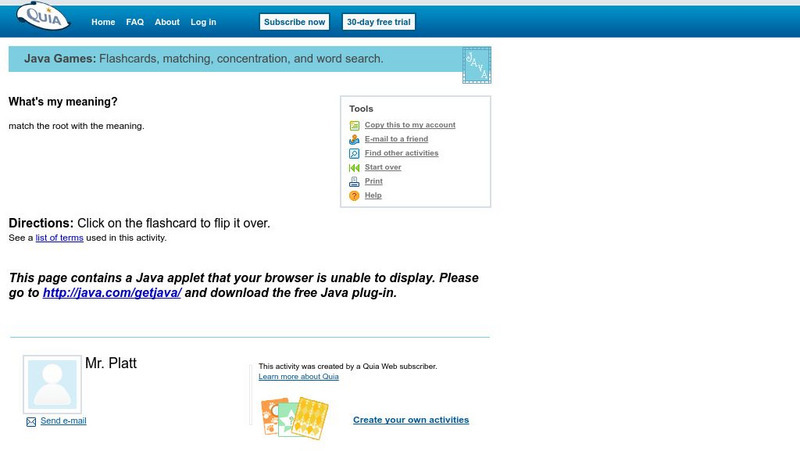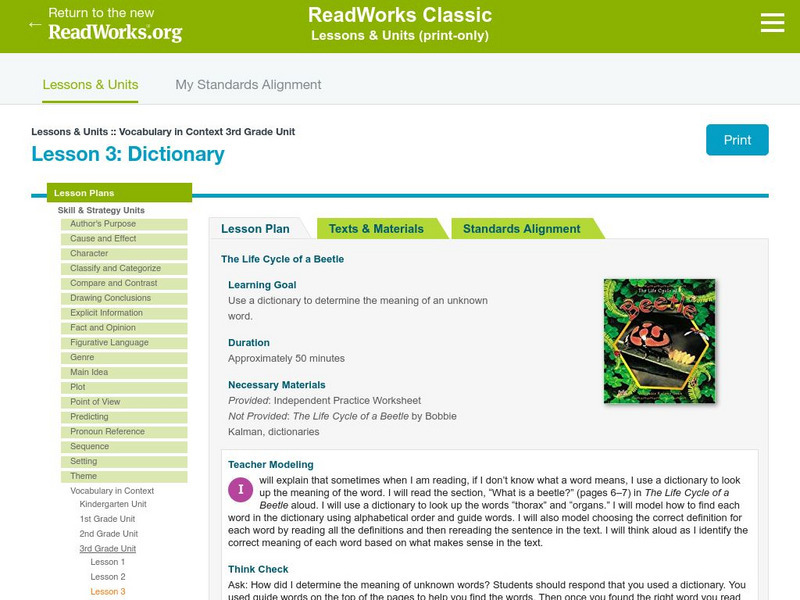Read Works
Cause and Effect Relationships in Historical Fiction
Centered around the book Pink and Say, by Patricia Polacco, the lesson presented here should help your class tackle cause and effect. The teacher reads the first few pages aloud and models in a think-aloud style how to identify cause and...
Read Works
Climax of a Story
Demonstrate how to track the elements of plot in a story. After watching you mark down the rising action, problem, climax, falling action, and resolution for Stone Soup by Jon J. Muth, pupils complete a graphic organizer for Sweet Clara...
Curated OER
Working Watermelon
You're going to wish you had a watermelon for this lesson! Class members read about watermelons and make a salad in class to sample. They also perform estimates, measurements and calculations on a watermelon. They predict what percentage...
Curated OER
Bread in a Bag
This lesson focuses on making bread, but also spends some time on the origins of wheat. In order to make the bread, each class member receives a kit full of the materials they will need. Included here is a detailed list of instructions...
Curated OER
Ag In The Outfield
Young scholars explore baseball. This is a cross-curricular plan that includes math, history, and agriculture. Pupils use their five senses to observe the materials a baseball is made from and identify the agricultural products used. In...
Curated OER
Mighty Earth Movers
Note that although the publisher lists almost all of the Common Core standards for both math and language arts, you will most likely want to take the general topic and choose which area to focus on. Regarding math, pupils measure worms...
Curated OER
Piece by Piece
What do your pupils know about quilting? Read and discuss the information included here before sending class members off to create their own quilt blocks using construction paper. When they have completed their blocks, provide some time...
Curated OER
Just Lookin' For a Home
What is a boll weevil? Your class can find out that and more by following the activities included here. Pupils read an article, sing a boll weevil song, add to the song with their own original lyrics, illustrate the song, study the...
Beacon Learning Center
Power Words
Using words can create a power struggle! Using antonyms and synonyms can create a Power Words game! Check out this instructional activity that teachers your class the difference between the two and how to use a thesaurus.
Other
Into the Book: Inferring: Using the Clues
Watch an introductory tutorial about inferring during reading, and then choose from several different types of texts to practice using the skill.
University of South Florida
Fcat Express: Contextual Clues
Strategies to help students recognize the meaning of words through contextual clues provided by a standardized test preparation site intended for fourth grade. Includes strategies such as C(2)QU (See Two Cue You), PReP (Prereading Plan),...
Reading Rockets
Reading Rockets: Semantic Gradients
Use the strategy of determining semantic gradients (shades of meaning) to help students improve their vocabulary and understanding of related words.
Other
Wisewire: Grade 3 Playlist: Clues to Unknown Words Using Known Roots
A dictionary is not the only way to figure out the meaning of new words. Readers also can look for familiar word parts. These word parts might appear in other words that readers already know. By looking for familiar word parts, including...
McGraw Hill
Mc Graw Hill Education: Language: Vocabulary Acquisition: Shades of Meaning
This is a PDF learning exercise in which the students order synonyms according to the strength of the word and fill in the blanks in a reading passage with the most appropriate word.
Curated OER
Mc Graw Hill: Part 2 Reading Informational Text: Understand Precise Vocabulary
Learn how to use context clues to help you define precise vocabulary words that you may not know.
Curated OER
Mc Graw Hill: Part 2 Reading: Informational Text: Understand Content Words
A reference page that shows you how to use context clues to figure out the meaning of unknown content words.
Other
Interacting Texts Directed Activities Related to Texts (Darts)
Want to improve your students' reading skills? This is a good place to find the types of directed activities, using a definition text, reconstruction/analysis activities, and advantages of using DARTs.
ReadWriteThink
Read Write Think: Using Word Webs to Teach Synonyms for Commonly Used Words
Contains plans for seven lessons that teach students to use more expressive synonyms in their written and oral language. In addition to objectives and standards, this instructional plan contains printable resources for the lessons as...
Quia
Quia: What's My Meaning
These virtual vocabulary flashcards display the root words on one side and their meanings on the other.
Quia
Quia: Synonyms
In this game, students draw a line between synonyms in each column. Java is required.
E Reading Worksheets
E Reading Worksheets: Context Clues Worksheets: Context Clues 2.2
This site shares a context clues worksheet. Students will read each sentence, write original definitions of bolded terms, and then write the clues that help them determine the bolded words' definitions. Links for an answer key,...
Stanford University
Parker Library on the Web: Understanding Illuminated Manuscripts: Glossary
Understanding Illuminated Manuscripts: A Guide to Technical Terms, authored by Michelle P. Brown, has granted permission to present a virtual glossary of terms.
Other
How to Study: Building Vocabulary: Using Context Clues to Learn Word Meaning
This resource explains six ways authors use context clues that might help readers understand unfamiliar words. CCSS.ELA-Literacy.CCRA.L.4, 8.2.B
Read Works
Read Works: Vocabulary in Context 3rd Grade Unit: Dictionary
[Free Registration/Login Required] A lesson plan in which students learn to use a dictionary to determine the meanings of unfamiliar words. Lesson utilizes the book The Life Cycle of a Beetle by Bobbie Kalman and Molly Aloian and...






















